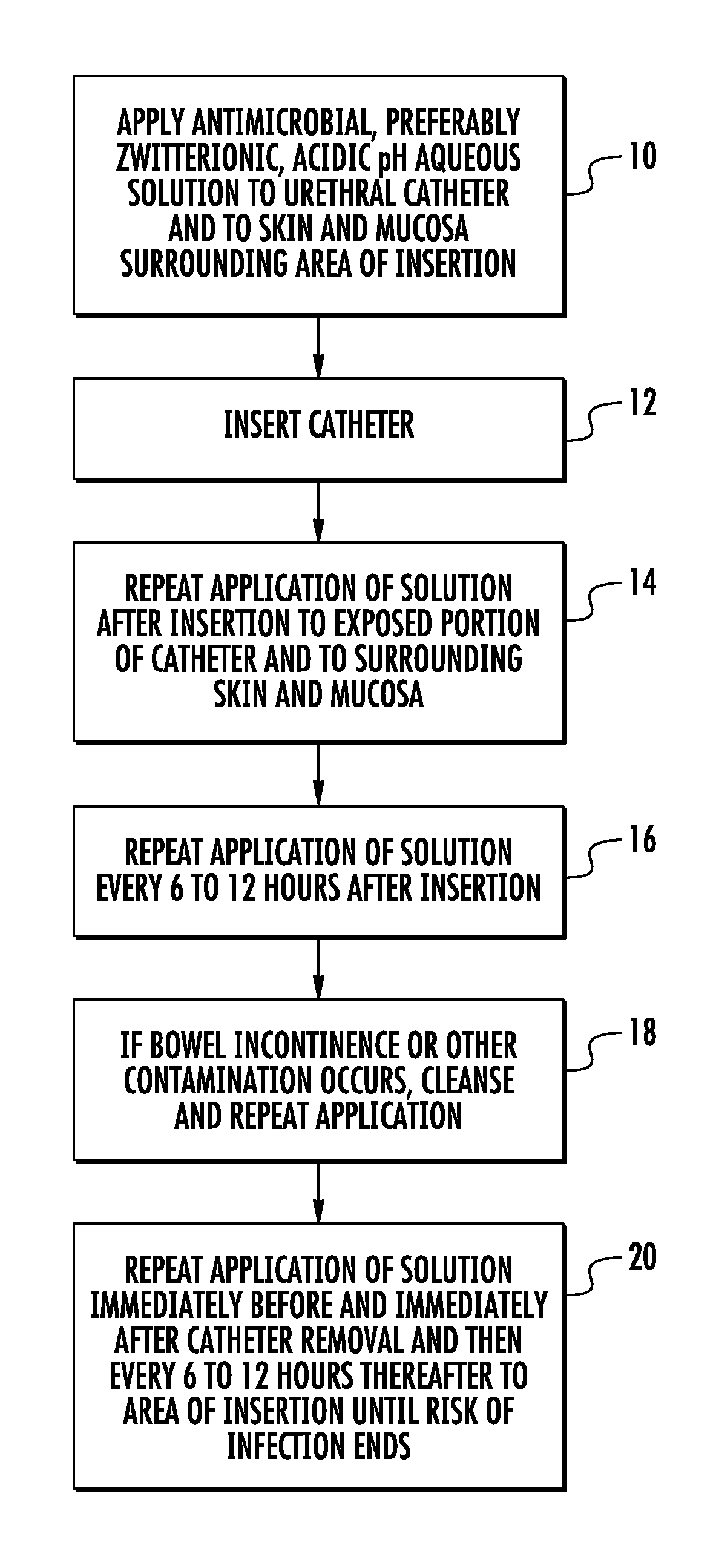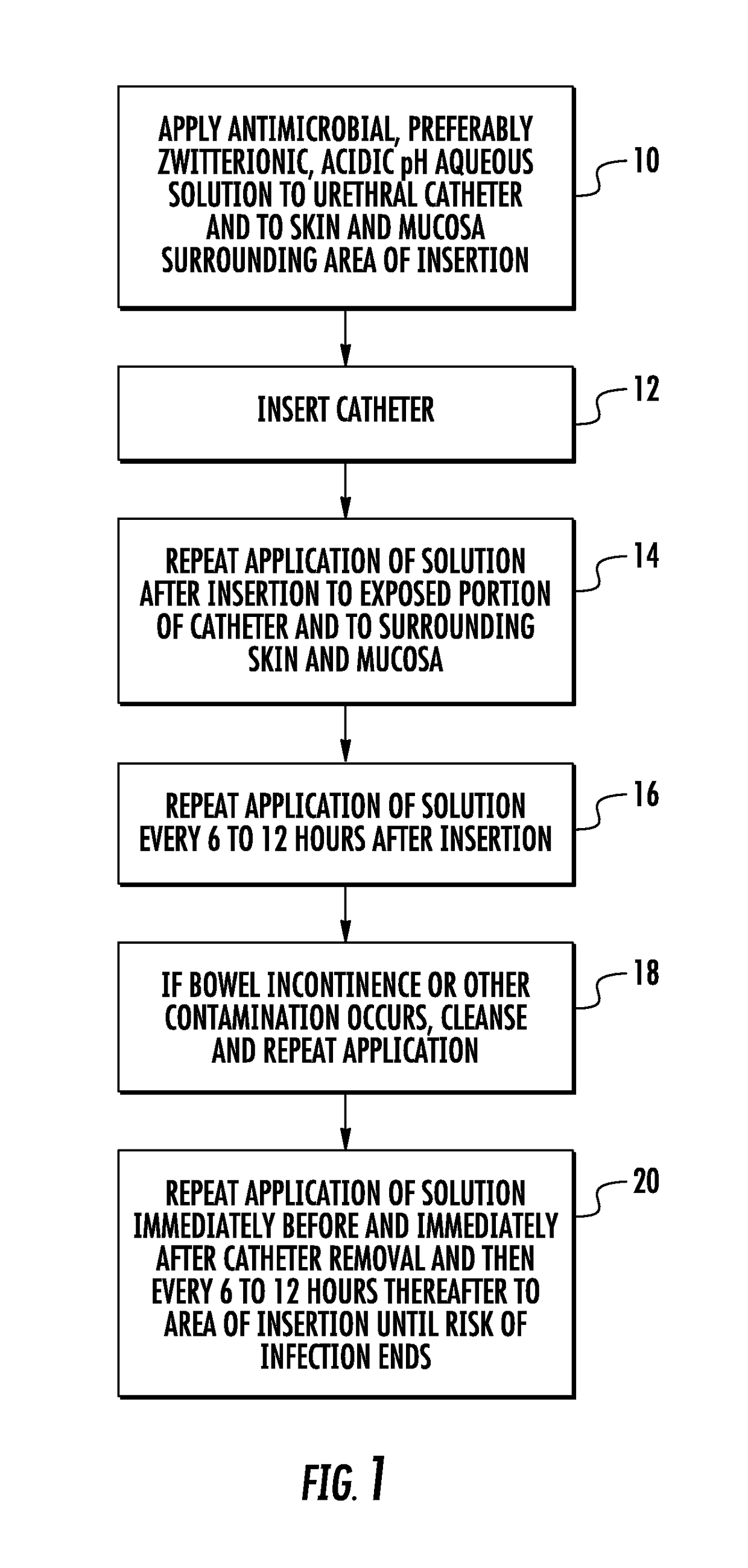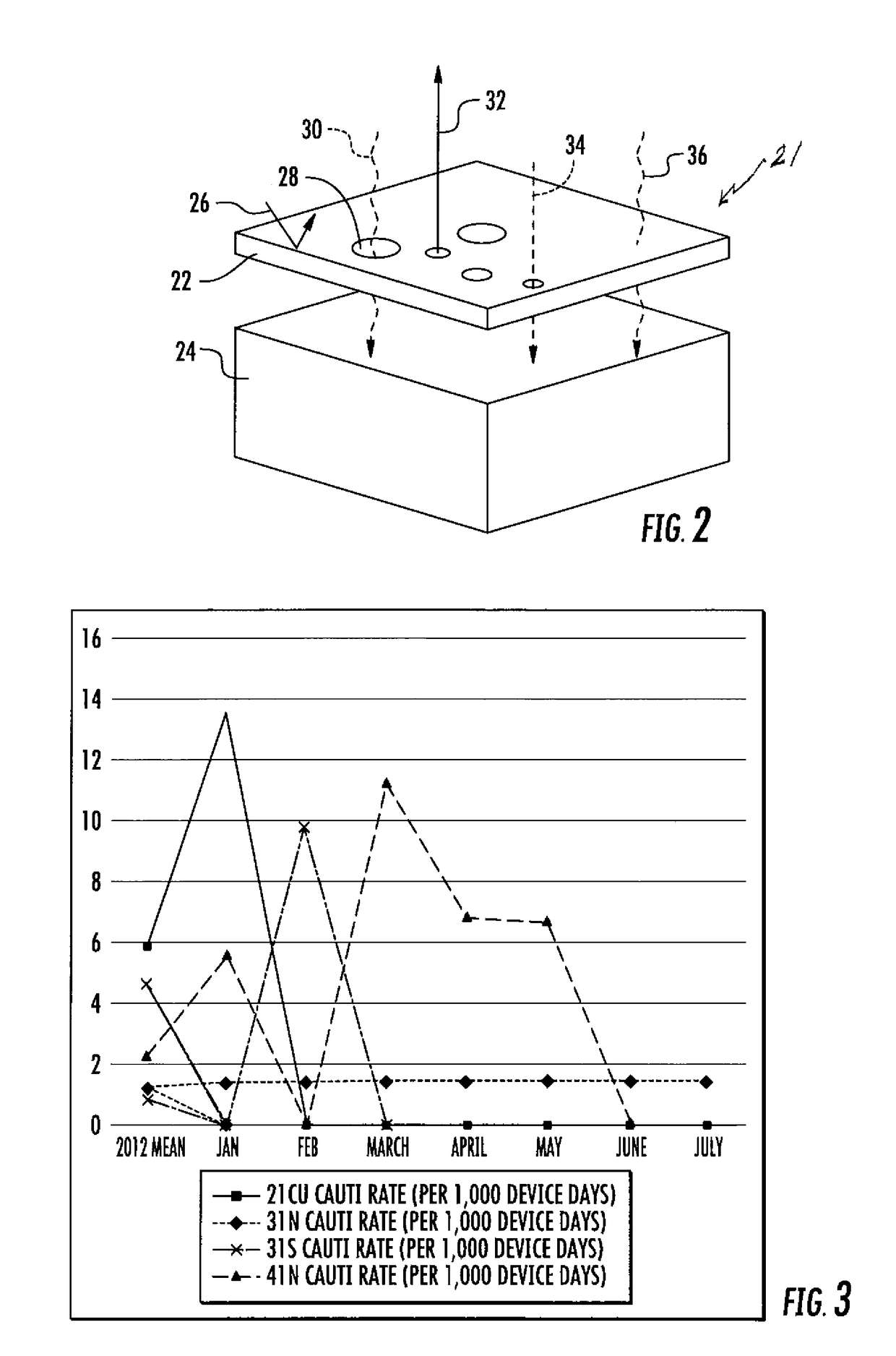Method for maintenance of urethral catheters
a urethral catheter and catheter technology, applied in the direction of water installations, disassemblies, etc., can solve the problems of significant hospital risk, negative health outcomes for patients, and significant hospital acquired infections, so as to facilitate infection, reduce or prevent the possibility of infection, and promote healing
- Summary
- Abstract
- Description
- Claims
- Application Information
AI Technical Summary
Benefits of technology
Problems solved by technology
Method used
Image
Examples
examples
[0066]A trial was conducted at First Health Moore County Regional Hospital, a 395 bed facility, in Pinehurst, N.C. from August to October 2013. Prior to the trial, First Health's CAUTI rate was similar to other similar size hospitals in North Carolina. After reviewing the CAUTI's that occurred at First Health, it was discovered that the majority of CAUTI's occurred after a Foley catheter had been in place for greater than 5 days, which lead the hospital to believe that it had issues with the care and maintenance of catheters. The hospital then used THERAWORX® brand skin cleanser in July of 2013 in its intensive care unit, or ICU, and began the trial in August. Hospital personnel were directed to apply THERAWORX® brand skin cleanser to the perineum as a pretreatment step, both before and immediately after insertion as described hereinabove and to implement a maintenance treatment step every 8 hours while the catheter was inserted.
[0067]In the same time period a year earlier the hospi...
PUM
| Property | Measurement | Unit |
|---|---|---|
| concentrations | aaaaa | aaaaa |
| indwelling time | aaaaa | aaaaa |
| time | aaaaa | aaaaa |
Abstract
Description
Claims
Application Information
 Login to View More
Login to View More - R&D
- Intellectual Property
- Life Sciences
- Materials
- Tech Scout
- Unparalleled Data Quality
- Higher Quality Content
- 60% Fewer Hallucinations
Browse by: Latest US Patents, China's latest patents, Technical Efficacy Thesaurus, Application Domain, Technology Topic, Popular Technical Reports.
© 2025 PatSnap. All rights reserved.Legal|Privacy policy|Modern Slavery Act Transparency Statement|Sitemap|About US| Contact US: help@patsnap.com



